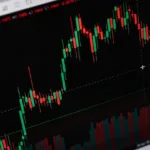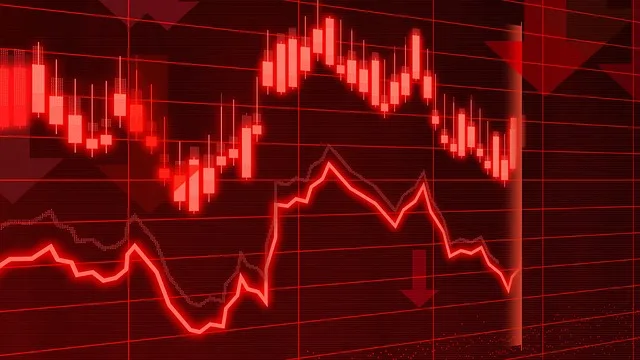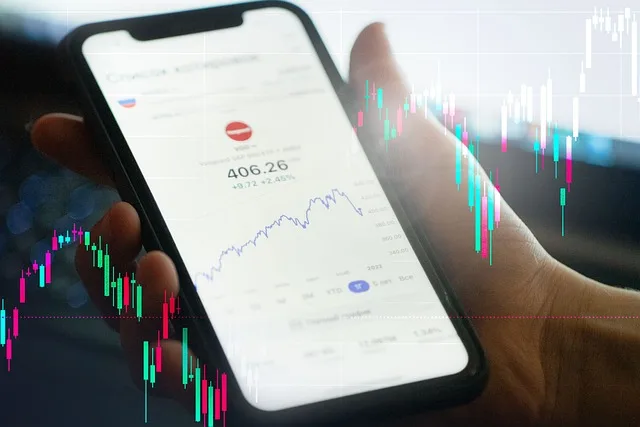In the intricate world of stock trading, understanding candlestick patterns can mean the difference between a triumphant investment and a missed opportunity. One such pattern that stands out is the Northern Doji. This article delves deep into its anatomy, formation, and its undeniable relevance in making informed investment choices.
Understanding the Northern Doji
The Northern Doji is a candlestick pattern that signals a potential reversal in the price direction. It is characterized by a small body, indicating that the opening and closing prices are nearly identical, with a long upper shadow and a negligible or no lower shadow.
Anatomy and Formation: Unveiling the Northern Doji
This Doji is a classic candlestick pattern that is instrumental in understanding market psychology and forecasting potential reversals. A deep dive into its anatomy and formation can empower traders with insights that are critical for making informed decisions.
The Body:
The body of this candlestick is characteristically small, representing a close match between the opening and closing prices within a specific time frame. The minimal difference in these prices indicates a tug-of-war between buyers and sellers, with neither gaining significant ground.
- Color: The color of the body can be either green (or white) indicating a slight edge to the buyers, or red (or black) suggesting a minor advantage to the sellers. Regardless of the color, the key takeaway is the near equilibrium between buying and selling pressure.
The Shadow:
The shadows of this Doji are crucial elements that set it apart. These are the slim lines that stretch both above and beneath the central body.
- Upper Shadow: The upper shadow represents the highest price reached during the period. The length of this shadow is a testament to the buyers’ attempt to push the prices up.
- Lower Shadow: Conversely, the lower shadow signifies the lowest price point touched. It indicates the sellers’ effort to drag the prices down.
In a Northern Doji, both shadows are typically long, suggesting that the market explored a wide range of prices before settling close to where it started.
Contextual Positioning:
The location of the Northern Doji within a price chart is also of paramount importance.
- After a Downtrend: This Doji is particularly significant when it appears after a series of bearish (downward) candles. In this context, it indicates that the selling pressure might be weakening and a potential bullish reversal could be on the horizon.
Formation Dynamics:
Understanding how a Northern Doji is formed involves visualizing the market dynamics during the period.
- Beginning: At the start of the period, the market opens at a certain price.
- Fluctuation: Throughout the session, prices may experience a roller coaster ride, soaring to the highs and plummeting to the lows.
- Conclusion: By the end of the session, the market closes very near to the opening price, resulting in a small body.
Psychological Implications:
The formation of this candle is indicative of indecision in the market. The struggle between the bulls and bears, buyers and sellers, is captured in the small body and long shadows. It’s a pause, a moment of reflection where the market seems to be contemplating its next move.
Decoding Market Sentiments
This Candlestick Pattern acts as a guiding light for investors. When this pattern is observed after a downtrend, it signals that the sellers are losing momentum, and a reversal might be on the horizon. Experienced traders keep a vigilant eye for such patterns to make strategic investment decisions.
Historical Perspectives: The Evolution of the Pattern
Candlestick charting, and by extension, this Doji Pattern, has roots in 17th-century Japan. Initially used for tracking rice prices, these patterns have evolved into universal tools for financial market analysis. The resilience and time-tested validity of patterns like the Northern Doji underscore their importance in contemporary trading.
Real-Time Experiences: The Northern Doji in Action
Consider an example where a stock has been experiencing a continuous fall in prices. Suddenly, this particular Doji appears on the chart. A seasoned trader, cognizant of this pattern, anticipates a reversal and capitalizes on this opportunity by investing judiciously.
In-Depth Analysis: The Reliability of the Northern Doji
The reliability of this Doji pattern lies in its historical recurrence and predictive accuracy. Scientific consensus in financial studies underscores the efficacy of candlestick patterns in forecasting price reversals, bolstering its trustworthiness.
Strategies and Application
Implementing this Japanese candlestick pattern into trading strategies involves keen observation and swift action. Here are some steps to effectively incorporate this pattern:
- Spotting the Pattern: Monitor charts diligently for the appearance of a Northern Doji post a downtrend.
- Seeking Confirmation: Validate the pattern with subsequent bullish candlesticks or other technical indicators.
- Risk Management: Establish stop-loss and take-profit levels to mitigate risks.
Psychology Behind the Pattern
Understanding the psychology behind this pattern adds depth to its interpretation. This pattern encapsulates a moment of hesitation among traders, signifying a possible shift in sentiment. It’s this collective pause and reevaluation by market participants that can lead to a reversal.
Comparison with Other Patterns
The Northern Doji shares a kinship with other candlestick patterns like the Southern Doji, Hammer, and Hanging Man. While they all offer insights into market sentiment, each has a unique context and significance. Distinguishing between these patterns and understanding their subtleties can enrich a trader’s analytical approach.
Technological Tools and Resources
There are numerous technological tools available that can assist traders in identifying patterns like the Northern Doji. Charting software and trading platforms often come equipped with features that automatically highlight or alert traders to such patterns, thereby aiding in timely decision-making.
Global Perspectives: The Northern Doji Across Markets
The versatility of this pattern is evident in its applicability across diverse markets, from stocks and forex to commodities. Traders across the globe recognize this pattern as a universal language signifying potential market shifts.
FAQs
What signifies a Northern Doji?

A Northern Doji is identified by a small body with long upper and lower shadows, usually indicating a potential bullish reversal after a downtrend.
How reliable is a Northern Doji?

While indicative, this Doji pattern is not foolproof and is often validated with subsequent patterns or technical indicators.
Can beginners use the Northern Doji for trading?

Yes, with proper understanding and risk management, beginners can incorporate the Northern Doji into their trading strategies.
Final Thoughts
Navigating through financial markets requires astuteness and an understanding of patterns like the Northern Doji. With its subtle signals and predictive nuances, this pattern becomes an essential component of technical analysis. By recognizing and adeptly interpreting this Doji, traders can strategically position themselves to seize potential opportunities and navigate through the tumultuous seas of market volatility.
Conclusion
Decoding the Northern Doji equips traders with insights into market hesitations and potential opportunities. This pattern, marked by its small body and long shadows, is a vital element in the arsenal of technical analysis.
For those seeking to delve deeper, [The Market Technicians] provides comprehensive literature on the Northern Doji and other market patterns. Through this knowledge, traders can refine their strategies and navigate the complexities of the financial markets with confidence.
Disclaimer: Trading carries inherent risks, and previous performance does not guarantee future outcomes. The content presented in this article is solely for educational purposes and should not be construed as financial counsel. We strongly recommend consulting a certified financial expert before initiating any trading activities.
Note: The material within this article is provided for informational purposes exclusively and should not be seen as a replacement for expert financial guidance. Whenever you have inquiries concerning your investments or trading methods, always seek the guidance of a qualified financial advisor.
Affiliate link disclaimer: Some links in this article may earn us a commission for any resulting purchases. Thank you for supporting our content.







Add a Comment